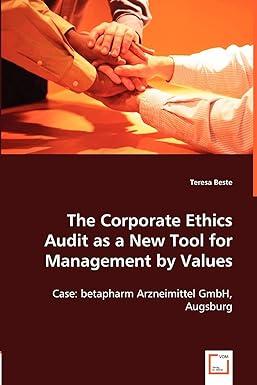Question
PT Group is a family-owned corporation founded and established in the last twenty years. The Group consists of two industrial production units, one publicly unlisted
PT Group is a family-owned corporation founded and established in the last twenty years. The Group consists of two industrial production units, one publicly unlisted and one publicly coded on all three stock exchanges in Pakistan, three private commercial enterprises and two private utility firms. The members of the family hold sixty per cent of the Board of Directors and the other executives 40 per cent. The company founder is Group Chairman, and the Chief Executive Officer is independent. The majority of PT Group shares are with members of the family, but the managing shareholder is the president. One of it's two units was N Ltd., an unlisted public firm, producing and selling a variety of high-quality house-based and industrial ceramic tiles. It had a state-of-the-art production plant. In addition to the domestic market, Middle East and North Africa, Central Asia and the European Union were the target export markets of the organisation (EU).
For more than 20 years, the N Ltd. plant was in business. At first, the global sales of ceramic tiles increased only in terms of volume supported by the high quality of the product and the brand. For a decade N Ltd. has become monopolistic until overproduction steadily started to struggle, resulting in heavy storage and excessive lead times leaving inventory stocks in its wake. N Ltd. was rapidly losing its share of the export market, unable to keep up with technical innovation in the global ceramic industry. Other primary factors affecting low sales were discovered. The plant was under capacity because of the strong competition from heavy flows of Chinese finished goods at very low prices, which caused the N Ltd's products to enter the market. Production costs at the plant grew because of high electricity and commodity costs, high parity of rupee dollars and import duty and tariffs on raw materials. The board of directors of N Ltd. had assessed a long time earlier that the business would not last ever under monopolistic conditions. The board had 10 members, six were family members, and four non-family members. The four consisted of N Ltd's CEO, an associate chairman and two chief executives. A manager with more than 15 years of manufacturing and logistical expertise had a career in the ceramic industry.
The ideology of N Ltd. CEO was straightforward. Increasing profit margins could compensate for a drop in underlying quarterly sales: 1) a depreciation of the balance sheet; 2) a reduction in interest charges from debt refinancing. The firm relied heavily upon financial deals with banks and was eroding profit by paying high financial charges. The borrowing costs of N Ltd were high because banks raised their credit rates. A net operating loss was approaching, resulting in a negative ROCE, which rose year after year. As ROCE is a function of a dynamic commodity demand mix, the internal and volatile operating structure along with the capitalization of the balance sheet thus affects the return on capital of the company or industry, too. Many of these factors could not be under management supervision.
In order to prevent losing ownership of the Venture, it was considered by the Board to inject Rs200 million in N Ltd. through the shareholding of two partner companies of the Group, one of which was OI Limited, the public entity. The equity not only balances the equity levels of N Ltd, it also offers the firm a chance to gain a higher market share. The board of directors presented a recommendation to the board. The consultancy report concluded that for full capacity usage N Ltd. would modernize its plant and facilities. The group has already had to diversify as a key component of its market into sanitary products. The Board supported the recommendation of the Committee.
The boards proposal for funding N Ltd. through equity was rejected by Chairman who looked at it as subsidizing N Ltd. at the cost of OI LTD. Chairmans philosophy was to survive on borrowed capital. Chairman was of the opinion that the board was risk averse while he had the entrepreneurs appetite for risk. Further to it Chairman thinks that the market had become too competitive. N Ltd. needed to go in a new direction. Due to the rigidness of the Chairman and the skeptical behavior about the Corporate Governance practices prevail in Pakistan, The N Ltd. Facing serious cash flow problems and end up by selling it to another group which brings serious consequences for their stakeholders.
Questions: (Answer all the questions in light of literature (Articles and theories) including citations and case studies)
- Why has N Ltd. failed?
- Had the chairman been mis founded to think that the board did not have to confirm his corporate decisions?
- Was the N Ltd. board mistaken in proposing for business such as the CEOs and others to take strategic action?
- Were its daily outgoings of the CEOs influencing the policy of N Ltd?
Step by Step Solution
There are 3 Steps involved in it
Step: 1

Get Instant Access to Expert-Tailored Solutions
See step-by-step solutions with expert insights and AI powered tools for academic success
Step: 2

Step: 3

Ace Your Homework with AI
Get the answers you need in no time with our AI-driven, step-by-step assistance
Get Started


